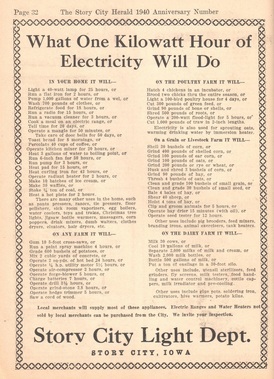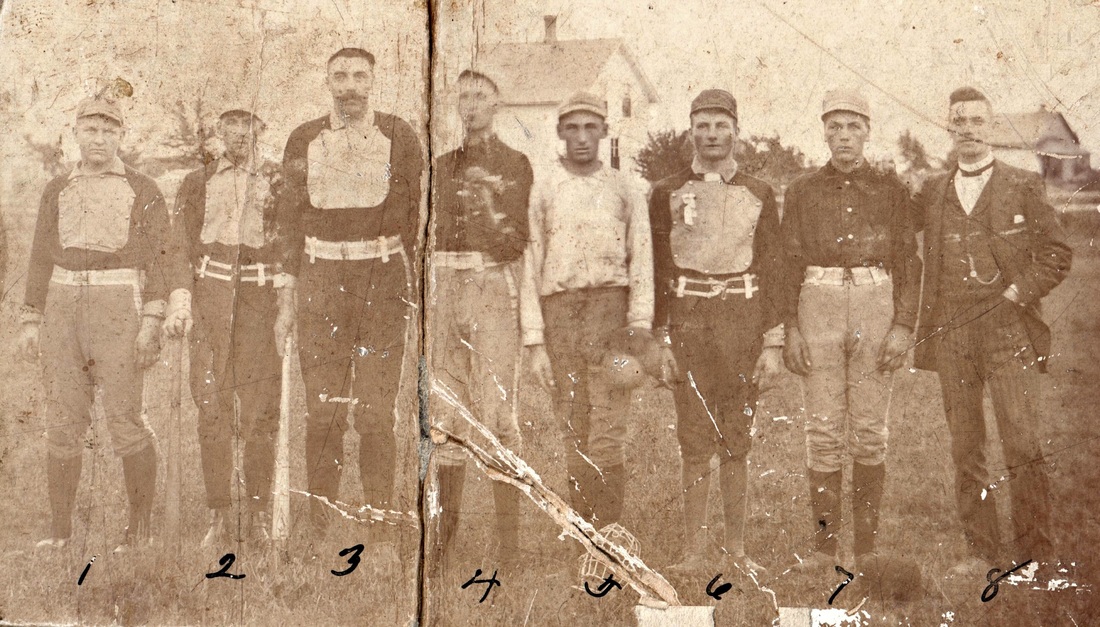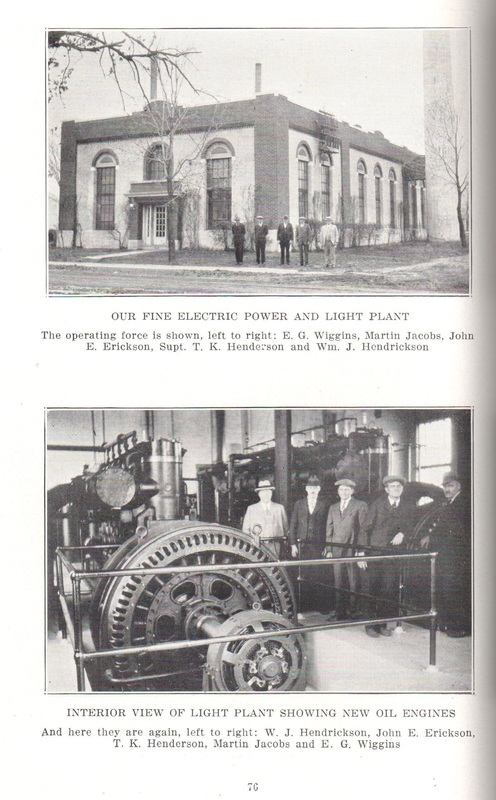 This week we are featuring a unique advertisement from the Story City Light Department. The ad tells you several options for what one kilowatt hour of electricity will do in your home or on your farm. The Light Plant building was constructed in 1919. Below are photos of the Light Plant from the 1931 Story City Golden Jubilee Book.
0 Comments
 The team of the 1890s was nicknamed the Story City Giants on account of their abilities and size. Freeman Fuller (#3) was 6' 4" tall and 3 others were over 6 ft. The team of the 1890s was nicknamed the Story City Giants on account of their abilities and size. Freeman Fuller (#3) was 6' 4" tall and 3 others were over 6 ft. In the introduction pages of the 1940 Story City Herald Anniversary Book, the editor P.A. Olson, wrote a short description about the baseball era. “Anyone who reads this Anniversary Number may be struck with the fact that there is quite a lot in it about baseball. You couldn’t write a history of Story City without saying a good deal about the great American game.” Olson included several articles about baseball written by Andrae B. Nordskog, Rasmus C. Severeid (Hank Severeid’s older brother), and W.A. Kelley. The themes of these articles included the success of the Story City team and information about the town’s greatest players. Nordskog, who lived in California in 1940, wrote about his old home town of Story City and how baseball was a red-hot sport. In the 1890s and 1900s Story City’s baseball team was the team to beat. During an eleven year period, the Story City team lost only one game to the Ames college team. Beating the Iowa State College team was a theme in all of the articles on early baseball. Rasmus C. Severeid in his article wrote “how well do I remember the smart geeks down at the I.S.C. more than once nearly bit off one other’s noses in a fit of frenzy over a bad defeat at the hands of the despised ‘Norskies’.” Another theme that spanned all three articles was that Pete Peterson was the best pitcher Story City ever produced. Nordskog, in his article recounts how he taught Peterson his curve ball. Nordskog was pitching in Randall in 1903 when Peterson’s team came to play. Nordskog struck Pete out three times. After the game Pete asked Nordskog to show him how to throw that curve ball. According to Nordskog, he gave Pete the secret for an “out-curve riser” and Pete used it with more success than he did because Pete was much stronger and faster. W.A. Kelley wrote about Pete’s successes in his article. In one season Pete won 25 games, lost one, and two were ties. Of the 25 victories, 11 were shutouts. I have to share one of my favorite descriptions of a player from Ramus C. Severeid’s article, he was writing about Freeman Fuller. “Fuller is the only player I ever saw who could bat a ball gripping the large end of the bat seemingly as well as the small end. No pitcher of those days had anymore show of executing a strike out on him than a dog with tallow legs chasing an asbestos cat thru a prairie fire.” The other theme that was consistent throughout the articles, which were written by former players, was that the “old timers” of the 1890s and early 1900s never lost their love for the game. Kelley and Severeid’s articles were originally written in 1914. They were ready to gather their teammates of 10-20 years ago and show the youngsters of 1914 a thing or two. I hope you have enjoyed this glimpse of early baseball in Story City. These articles were written by players of the era prior to Hank Severeid (Story City’s most famous baseball player.) Hank will be featured in next month’s Herald article. |
AuthorKate Feil Archives
February 2023
Categories
All
|

 RSS Feed
RSS Feed
